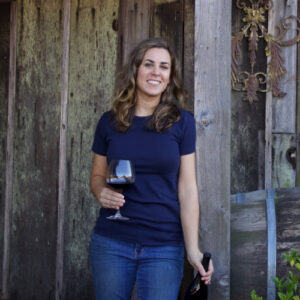Family farms have just been given the chance to survive
and prosper in Napa County.
By Barbara Barrielle
On, April 5, 2022 the Napa County Board of Supervisors adopted a new Microwinery Ordinance, amending Napa County Code to let farmers obtain a use permit for a microwinery via approval by the zoning administrator, instead of the planning commission. This change lets applicants avoid public hearings, potentially reducing costs of acquiring a use permit.
![Under previous rules, most small, family-owned ventures could not offer tastings of their own wines on their own vineyard property.[iStock]](https://wineindustryadvisor.com/wp-content/uploads/2022/07/istockphoto-605761554-612x612-1-300x200.jpeg)
Under previous rules, most small, family-owned ventures could not conduct tours or offer tastings of their own wines on their own vineyard property. This rule crippled many longtime county growers and winemakers, especially producers averaging 1,000 cases per year or fewer, who have not been able to properly market their wines or invite visitors to their property.
And, while it may seem easy to circumvent this rule, crackdowns on offenders starting in 2012 forced small wineries to look for another option.
Saving the Farms
Enter Save The Family Farms (STFF), now 25 members strong, which has spent more than four years organizing, drafting potential guidelines and lobbying the powerful Board of Supervisors to hear its case. In a 2020 interview, board member, winery owner and attorney Lindsay Hoopes said, “Napa Valley has incredibly strict development laws that don’t allow on-property tastings without a winery [production facility] in place.” This, of course, was financially prohibitive to many valley families.
!["Many Napa Valley families are land rich and cash poor, so a $5 million to $10 million [winemaking] facility is impossible." —Lindsay Hoopes](https://wineindustryadvisor.com/wp-content/uploads/2022/07/Lindsay-Hoopes.jpg)
Today, Hoopes says, “I’m a lawyer and I’m full of piss and vinegar. All we’re asking for is economic viability. You used to be able to start small and grow a winery or be a multi-generational family farm and have kids take over from their parents. Many Napa Valley families are land rich and cash poor, so a $5 million to $10 million [winemaking] facility is impossible — and, for properties [this small], DTC is crucial or you’re toast.”
Elise Nerlove, the newest member of the multi-generational Elkhorn family grape growing operation, says, “[Lindsay] continually provides exceptional legal counsel and creative solutions to the challenges we face. She has helped us get a seat at the table with Napa’s most influential trade organizations. The grace with which she dedicates her time to STFF, on top of running her own business, is inspiring.” (Elkhorn Peak Winery is the first family-owned brand to pursue microwinery status.)
Reviewing requirements
STFF members are reviewing what it will take to qualify for microwinery certification. Nerlove explains some requirements won’t be cheap, such as widening roads to 20 feet with 2-foot shoulders. What’s more, traffic going to and from a microwinery can’t exceed 40 trips daily — and that includes employees and deliveries, basically leaving about 20 trips for visitors and 10 cars daily.
Another requirement is that a tasting facility can’t exceed 5,000 square feet which, says Nerlove, is not a problem for the amount of tours and tastings these small facilities plan to conduct. In the past, a larger winery would need a traffic study and their application would be reviewed by five county commissioners; microwineries will have a streamlined application process and look for the go-ahead from one single zoning administrator. The minimum size of a microwinery farm will be 10 acres.

Nerlove and her family’s winery are starting the process and, while it will be a cost, it’s nowhere near the approximate $5 million minimum normally required to establish a winery in Napa. “The spirit and intent is to have small family farms come into compliance,” says Nerlove. “We work the land and continue the Napa Valley legacy by maintaining the family farming tradition.”
With this show of support from the Board of Supervisors, it’s a tradition that should carry far into the future.
_________________________________________________________
 Barbara Barrielle
Barbara Barrielle
Barbara Barrielle was a longtime publicist in sports and wine before going to the other side as a wine, travel and entertainment writer. She also produces films and has a documentary “Crushed: Climate Change and the Wine Country Fires” releasing in 2021. Current publications Barbara writes for are AARP Magazine, Northwest Travel & Life, East Hampton Star, Napa Valley Register, Oregon Wine Press as well as Wine Industry Advisor. She lives in Healdsburg, travels extensively and studies wine and languages.
















